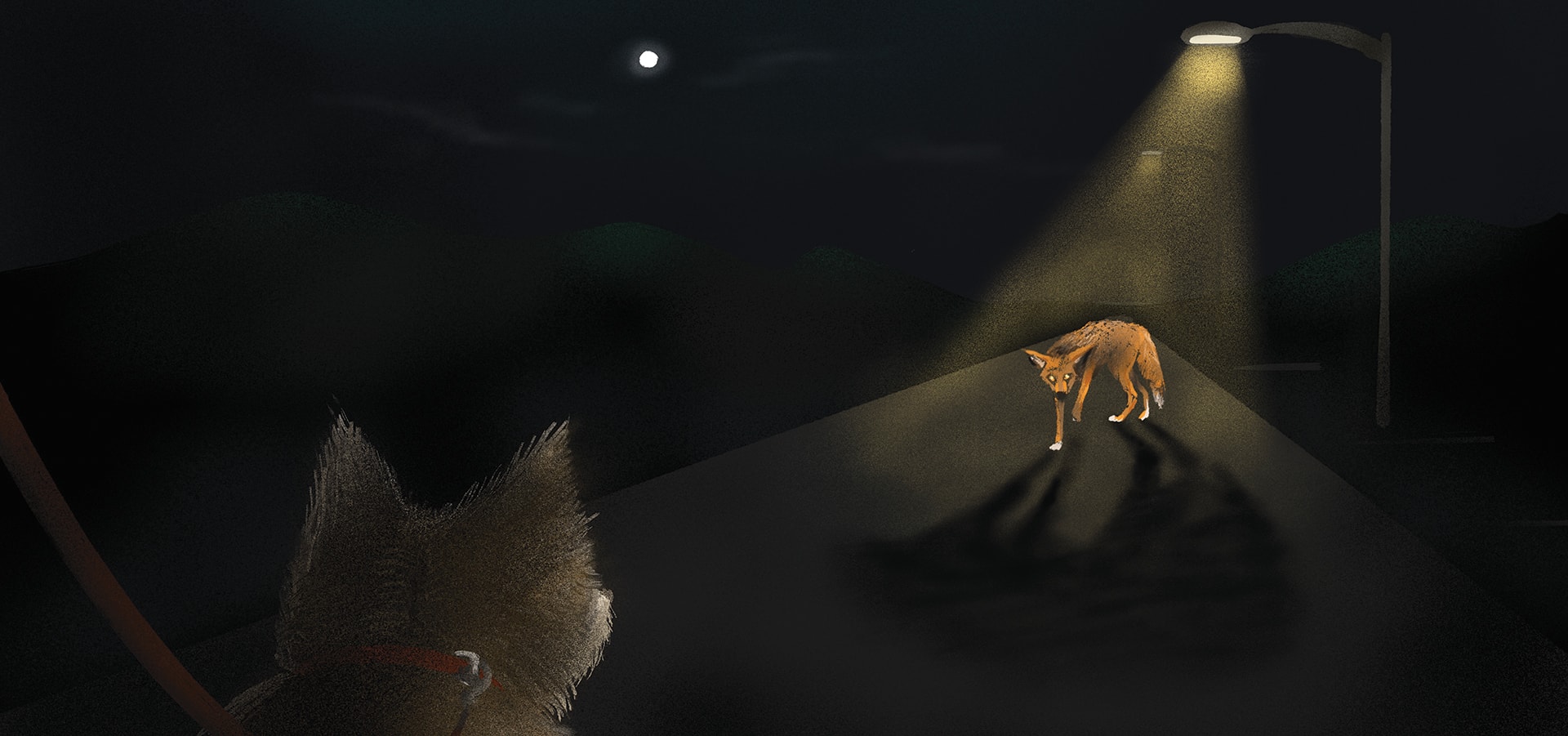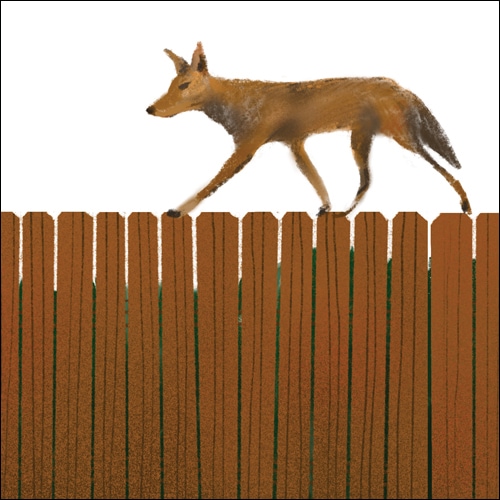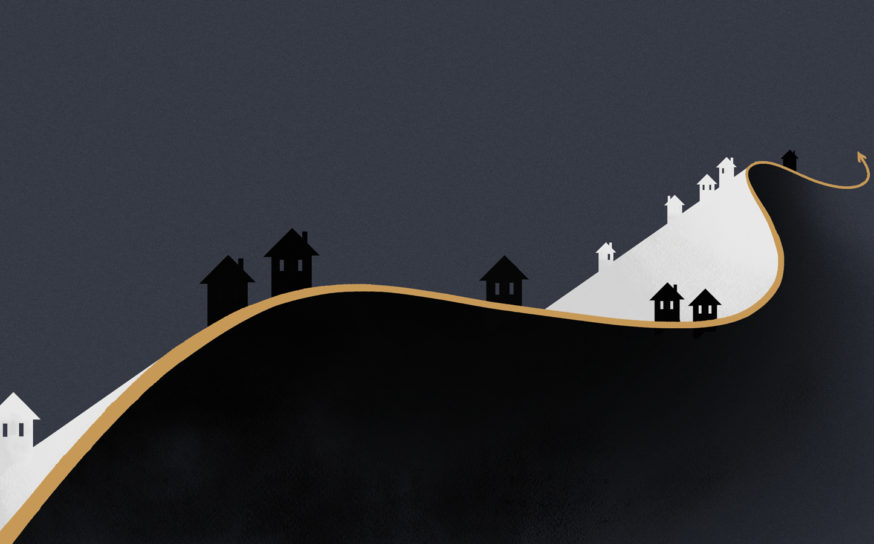
Is the Coyote Population Growing in the Valley?
Plus safety tips.
 Like most people who live in the Valley, Brian Gallagher had heard stories of coyotes attacking pets. But when it came to his Maltese, Oliver, he wasn’t concerned. Over the eight years the family had lived in their Encino home they’d seen just three coyotes.
Like most people who live in the Valley, Brian Gallagher had heard stories of coyotes attacking pets. But when it came to his Maltese, Oliver, he wasn’t concerned. Over the eight years the family had lived in their Encino home they’d seen just three coyotes.
“I wondered a couple of times,” says Brian, “should I build a fence? But with such infrequent sightings, I didn’t think it would happen to us.”
And then it did.
On an early Saturday morning, Brian was home with his 10-year-old son and 7-year-old daughter. “I heard Oliver barking in the backyard and yelled for my son to let him inside. Then out of the corner of my eye I saw a coyote jump into the backyard. I knew immediately what was going on.” The family’s screams caused the coyote to drop the dog and run off, but the damage was done. Oliver died four days later.
“My son said he felt like someone had murdered a member of our family. We all felt like that,” he recalls.
Paula Schwartz can relate; she has lost two dogs. Her husband let their shih tzu out in their Granada Hills backyard around 5 one morning when it was attacked by a coyote who had hopped a small wall. Trying to soothe their pain, the couple got another shih tzu. They were vigilant—until a slipup. “This time it was about 8 p.m. We were home and let the dog out for a run. About 8:30 we looked out and saw the dog, dead. It was devastating.”
If you live in the Valley and you own a pet, you hear these stories often—especially in summer when coyotes give birth and become brazen, moving from the mountains to our backyards, on the prowl for food for their pups. In recent years, Valley dwellers feel like it’s gotten worse.
“People who’ve lived here a long time are seeing coyotes in places they’ve never seen them before. An urban coyote breeds and makes more urban coyotes.”
Rebecca Barboza, a wildlife biologist with the California Department of Fish and Game, believes coyote numbers have gone up. “It is likely that the coyote population in urban areas is expanding, because (there) coyotes have unlimited food, water and shelter,” she says.
Justin Brown, a National Park Service biologist, adds, “It is unlikely any area with available food sources can go long without a coyote claiming the area.”
Niamh Quinn, a wildlife ecologist who works for the University of California’s Division of Agriculture and Natural Resources, puts it this way: “People who’ve lived here a long time are seeing coyotes in places they’ve never seen them before. An urban coyote breeds and makes more urban coyotes. There are coyotes in pretty much every area of Los Angeles right now.”
Now it’s not unusual to see a coyote walking along Ventura Boulevard or north into the flats—in broad daylight.
If the coyotes seem more brazen, Barboza says it’s because of our actions—leaving food out for pets or not picking up fruit fallen from trees. “Coyotes learn to associate humans with a food reward. They become bolder and show less fear.”
Brown has a similar take: “Animals in urban areas need to be bold to survive. I think that people encourage animals to become more fearless.”
So while the dangers to pets are obvious, what are the dangers for humans? Quinn, who’s studied coyote behavior for almost 10 years, says they do occasionally bite humans. “Some are unprovoked, but more are when people try to intervene when a coyote attacks a pet.”
Keeping pets safe is a challenge. “The only way to completely prevent your pets from being attacked is to keep them inside all the time,” Quinn states.
That’s not realistic for most of us. So we are left to our own devices. Shoot them? Discharging a firearm in public is a crime. Putting poison out is also illegal.
Many try to protect pets by building fences. While that can be a deterrent, it is not 100% effective; coyotes are capable of climbing fences as high as 10 feet.
Terry Weintraub, who has an Australian shepherd named Sully, lives above the Encino hills off Mulholland—prime coyote territory. At a cost of $1,000, Terry added a “coyote roller” to the top of their 8-foot fence. The rolling bar prevents a coyote from getting a foothold on the fence. “They hit the roller bar and can’t get up and over. The added expense gives me peace of mind.”
Brian Gallagher built an 8-foot fence with 2 feet of underground mesh to protect his family’s new dog. “The mesh will prevent them from crawling under the fence. And the top has spikes, so if a coyote tries to get in our yard again it will get impaled,” states Brian, adding, “I can’t have my family go through that again.”
Coyote Safety
The LA Department of Animal Services on what to do when a coyote approaches
- Immediately pick up your small dog and leash your large dog.
- Try to appear as large as possible. Stand up tall and wave your arms and shout.
- Throw something at the coyote to distract it.
- Carry a whistle, stick or umbrella while walking your dog.
- Do not turn and run; it might trigger a chase.
To learn more, go to the state’s Wildlife Watch program at wildlife.ca.gov/wildlife-watch











